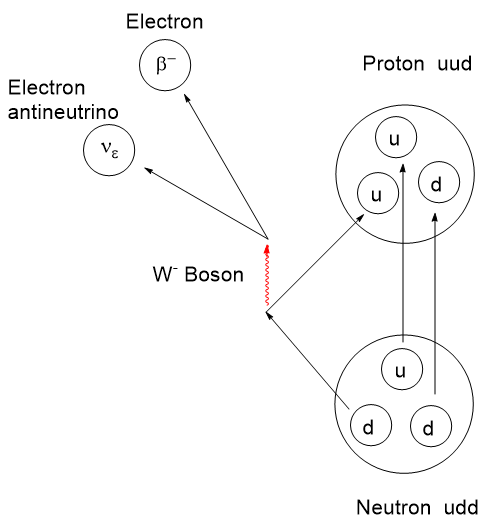A few thoughts on struggle in learning. I’ll confess to having taught undergraduates in the classroom and the research lab environment. My classroom teaching bona fides are limited to 6 years of college level chemistry lecture/lab and quite a bit of one-on-one chemistry tutoring.
Many students approach college chemistry courses with caution. For some, a year of freshman general chemistry is mandatory for their major. Majors such as pre-med, physical therapy, and veterinary medicine require organic chemistry in addition to general chemistry. As my specialty lies in organic chemistry, I have experience teaching both general and organic chemistry students..
From my perspective, general chemistry is as much a mathematics course as it is a science course for many first-year students. A significant portion of general chemistry involves establishing and solving problems that necessitate fundamental algebraic manipulations and calculations. Skills such as balancing equations, maintaining units throughout calculations, and understanding significant figures are essential to master. Additionally, there is the challenge of learning the new vocabulary.
Students who managed to avoid chemistry in high school sometimes found themselves treading water in college chemistry and were afraid of taking two 5 credit hour hits to their GPAs. Most pushed on and got through it. General chemistry is a foundation course and is critical for further pursuits in fields related to the use of chemicals. Unfortunately, a year of gen chem doesn’t really make a person able to function as an independent chemist. It is helpful, though, for technicians in a lab doing routine chemical tests.
Gen chem is to chemistry as The Hobbit is to The Lord of the Rings– it is the necessary prelude to a larger story.
A common problem I encountered while teaching chemistry was the desire of some students to give up hope of ever “getting it”. They would hold off attending office hours to discuss their difficulties until it was too far down the semester timeline. This was usually after a few botched regular exams or a low midterm grade. Frequently the struggling student was having trouble with or neglecting the assigned homework from the text.
Now and then you’d run into a prof who had performance expectations that even they might not have met as an undergrad. They’ll strut around acting as though they were singlehandedly maintaining “proper” academic ideals. Who knows, maybe they had a point. You can try to enthuse everyone using words and pictures, but inevitably there are those who are utterly disinterested, inept or just anxious to put chemistry behind them.
In retrospect, I should have been more direct in calling in more students to office hours who were in grade trouble early in the term. Unfortunately, like many other profs I sometimes subscribed to the sink or swim approach to college education where unsuitable students are culled from the herd. It is a sort of Darwinistic mindset that is easy to fall into. In the end, we have to give all students a fair chance or even a second chance to earn the credentials that the institution confers.
Colleges are organizations that award credentials to verify achievement in meeting or exceeding educational standards set by in-house professors. It tells people that you completed what you started: you navigated a complex maze of intellectual achievements and came out the other side a success.
For any given subject there are always those who struggle with it to some extent. It could be from simple boredom, distractions from real life or the comprehending of difficult material. It may be that the subject just isn’t for them. For myself, I struggled with a foreign language and eventually gave up. I needed full immersion and that wasn’t going to happen. I still regret giving up.
One problem that can often be addressed, however, is the matter of struggle. It seems that many students are not accustomed to struggling with learning. All of us have learned particular subjects successfully because it “just fit” our cognitive abilities, interest or perhaps it was brilliantly presented to us. Or it was a special time in our lives when we were uniquely receptive. It could very well be that previous exposure to the subject was a bit shallow with grade inflation, leading to overestimation of their abilities.
Unfortunately for some, the very necessity of struggle convinces them that the subject is beyond their abilities. They come to believe that if the subject does not immediately stick or appear obvious, then they might as well give up because they will never “get it” along with a collapse of self-esteem.
Giving up on a subject early-on could allow them to switch directions in their education with less time lost and perhaps they would be relieved by that. In this case, giving up is just making a better choice based on experience. Regardless, students should be unburdened early on of the idea that struggle is a predictor of failure. In reality, most learning involves struggle at least to some extent.
Remedies for Struggle
Reading the assigned chapters several times is helpful. First pass, scan the content for a general idea of where the topic is going. A careful reading next with a focus on the example problems is very helpful. Try to understand the example problems and the reasoning presented. Next work on the problem set. If there is time, a third reading can help to cement in the concepts in the chapter. Before going on, work on the assigned problems. Open the solutions manual only if stuck. Struggle with the problem a bit. Success with solving assigned problems can be extremely helpful for a student.
If laboring alone isn’t helping, some schools have tutoring resources available. If not, there are often tutors who will charge on an hourly basis. A few hours of tutoring may be all it takes to get back on track. Sometimes there may be study partners from your class who can study with you. Then again, office hours with your prof or TA can help you over some rough spots. The point is- Struggle!
When I was writing exams, I would look at the example problems in the text as well as the assigned problems. I chose the problems to assign because I felt that they got to the heart of the concepts I held as important to the subject at the level of the content. I would use the assigned problems or those from lecture to write problems using different substances where a reaction would lead to an unambiguous answer. It’s ok to write some questions that require bit of logic to solve, but you can’t turn the exam into an intelligence test.
I once taught a course in chemistry for non-majors. These were students who had tried to get into Geology for Poets or Astronomy but couldn’t get in. They were trapped into taking chemistry for their science requirement for graduation! Early on, a few “representatives” of the class cornered me after a lecture and informed me that “everyone” expected true/false questions on the exams. Pausing, I said I would give them true/false questions, but they would get 1 point for a correct answer, 0 points for no answer, and -1 point for an incorrect answer. The lesson was that if you don’t know something it might be better to just be quiet. After a single exam they never mentioned true/false questions again.
Students eventually realize that chemistry is a highly vertical subject. The more advanced and interesting concepts are built upon or knitted together from those learned earlier. Later coursework will assume that the student has a grasp of content from earlier prerequisite courses. Thirty-one years later the 95 course evaluations from that Catholic women’s college still sit in an unopened envelope in my office.
Find a way to deal with anxiety. Exercise or find a councilor, psychologist, or psychiatrist for help. Anxiety is “druggable”, that is there are meds for it that are very effective. I’m sure there are exceptions, but a family practice doc can’t go very far down the road in treating anxiety. A psychiatrist can fine tune and mix the individual meds to best suit you. It really works.
Most importantly, the student should not EVER get behind in the coursework. It might even be better to drop the class than try to make up for much lost time. The normal rate of chemistry content flow to be absorbed is already high. To have to make up for time lost while also keeping up with the current content flow is often impossible.
Finally, consider that struggle just means that you have to put forth effort to learn. True learning means that your neurons are making new connections in your brain, not just images of something new. To have learned means that your brain has found a way to take diverse inputs and assemble them into part of your consciousness. Sometimes it isn’t easy, but persistence is the key.
























Recent Comments